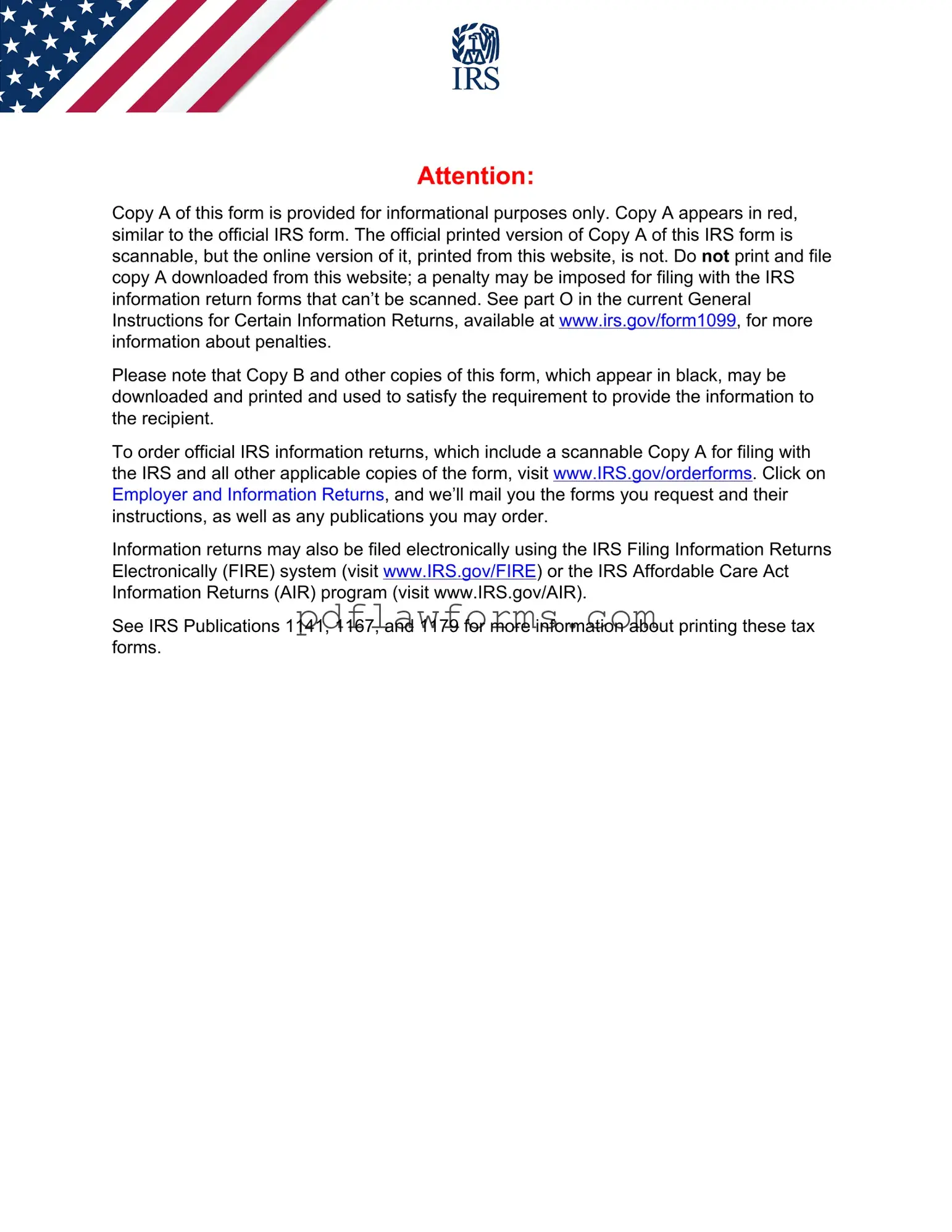Filling out the 1099-NEC form correctly is crucial for both payers and recipients. One common mistake is using the wrong version of the form. The IRS provides a specific version of Copy A that is scannable. If you print a version from the IRS website, it may not be scannable, leading to potential penalties. Always ensure you are using the official printed version for filing.
Another frequent error involves incorrect taxpayer identification numbers (TINs). Both the payer and recipient must provide accurate TINs to avoid issues. A missing or incorrect TIN can result in delays and complications, including penalties. Double-check the TINs before submitting the form.
People often overlook the importance of providing complete addresses. The payer's and recipient's addresses must include all necessary details, such as street address, city, state, and ZIP code. Incomplete information can lead to confusion and miscommunication, potentially affecting tax filings.
In addition, failing to report the correct amount in Box 1 is a significant mistake. This box should reflect the total nonemployee compensation paid. Errors in this amount can lead to discrepancies with the IRS, resulting in audits or penalties.
Another common oversight is neglecting to check the appropriate boxes. For example, if the payer made direct sales totaling $5,000 or more of consumer products for resale, this must be indicated. Failing to check this box can lead to further complications in tax reporting.
Many individuals also forget to consider state tax requirements. If state taxes were withheld, this must be reported accurately in Boxes 5-7. Missing this information can create issues with state tax authorities.
Lastly, people sometimes fail to provide copies of the 1099-NEC to recipients. It is essential to furnish the recipient with their copy of the form by the deadline. Not providing this can lead to confusion for the recipient and potential penalties for the payer.
